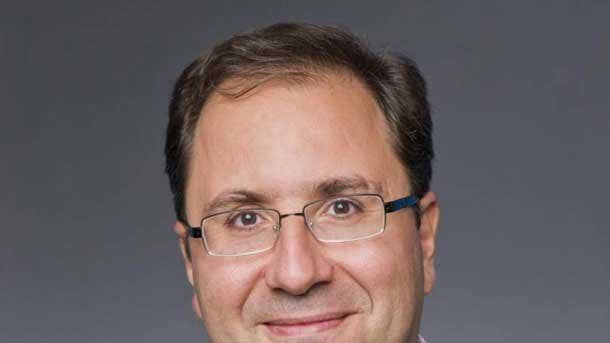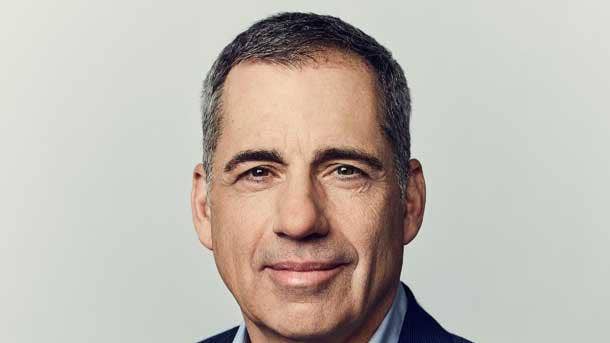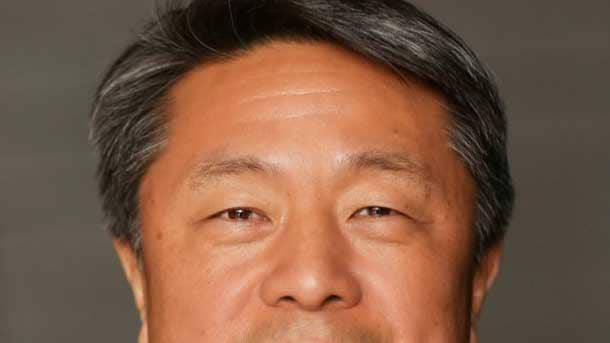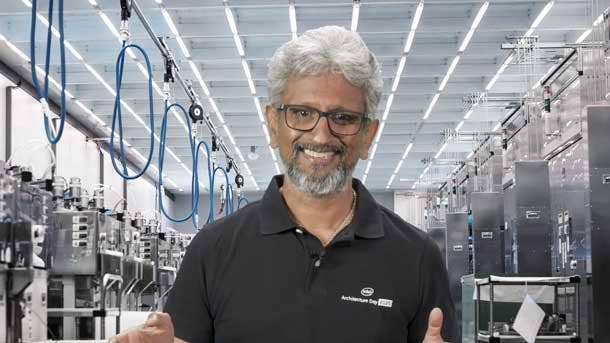Intel Reorganization: 8 Big Changes Made Under Pat Gelsinger
To fight back against the growing influence of AMD, Nvidia, Arm and other companies in the semiconductor industry, new Intel CEO Pat Gelsinger is enacting a whirlwind of organizational changes, both on the manufacturing side and the product side. CRN reviews the eight biggest changes.

Eight Big Changes In Four Months
In just four months, new Intel CEO Pat Gelsinger (pictured) has already made a sizable impact on the company in his bid to return the semiconductor giant to its former glory.
He has evolved the company’s integrated device manufacturing strategy to increase Intel’s use of external foundries and to launch Intel’s new foundry business. He has recruited former lieutenants, both from his time as VMware’s CEO and from his previous 30-year run at Intel. And now he is restructuring some of the most important organizations at the Santa Clara, Calif.-based company.
[Related: 4 Big Changes Coming To Next-Gen Intel CPUs]
To fight back against the growing influence of AMD, Nvidia, Arm and other companies in the semiconductor industry, Gelsinger has enacted two major reorganization efforts: one on the manufacturing and supply chain side and the other on the compute, networking and software side.
“I am confident these changes will help us accelerate our pace, as they fully align our organization against our priorities: one clear voice to the customer, distinct business units focused on leadership products, four functional organizations to ensure flawless execution and ongoing innovation, and the horizontal support organizations needed to fuel our strategy and culture for today and the future,” Gelsinger wrote in a memo to employees Tuesday that was seen by CRN.
What follows are the biggest changes Gelsinger has made as part of his restructuring efforts, from the formation of a new manufacturing group to the exit of Intel’s top data center executive.

New Manufacturing, Supply Chain And Operations Group
Intel internally announced its first major restructuring on June 7, saying that Intel will merge its Manufacturing and Operations group and Global Supply chain group into a new organization called Manufacturing, Supply Chain and Operations, according to a memo seen by CRN.
This and other changes were characterized in the memo as instrumental to the company’s transition to its new IDM 2.0 strategy, a major evolution of Intel’s integrated device manufacturing approach that involves expanding internal manufacturing capacity, ramping up the use of external foundries for certain products and launching Intel Foundry Services to make chips designed by other companies.
The memo said the new manufacturing group will be led by Keyvan Esfarjani (pictured), the executive who has been leading Manufacturing and Operations, while Randhir Thakur, who had been Intel’s chief supply chain officer, will focus on his role as president of Intel Foundry Services. All of Intel’s current global supply chain, manufacturing and operations leaders will now report to Esfarjani.
“By merging these two organization[s], we will create an end-to-end capability and accountability to drive world class execution and support to partner organizations by leveraging our top-ranking supply chain capabilities. Integrating our supply chain functions with M&O will also increase our agility and response times for our customers, particularly in a time of greatly increased demand for our products and technologies,” said the memo, which was signed by Esfarjani, Thakur and Michelle Johnston Holthaus, who is Intel’s chief revenue officer.
Intel previously declined to comment on the changes outlined in the June 7 memo. However, Esfarjani’s official title has been updated to senior vice president and general manager of Manufacturing, Supply Chain and Operations on Intel’s website.

New Corporate Planning Group
In the same memo about the new manufacturing group, Intel leaders said it had formed another new group, the Corporate Planning Group, which sits in Intel’s Sales and Marketing Group and brings together the Business Management Group, the Global External Manufacturing and Sourcing Group and long-range planning resources.
The new group is being led by Stuart Pann (pictured), a 33-year Intel veteran through 2014 who was most recently CEO of retail tech startup Bossa Nova and, prior to that, chief supply chain officer of HP Inc. Pann, who will report to the Michelle Johnston Holthaus, was previously the leader of Intel’s Business Management Group, which is responsible for pricing, revenue and forecasting for the company’s products. Pann’s new job was confirmed by Johnston Holthaus on Twitter and by Pann on LinkedIn.
“By combining these important functions into one team, we will accelerate the success of IDM 2.0 and enable business priorities across internal manufacturing, external manufacturing, and support all our customers for growth and success,” the memo said.

Groups Moved Under Intel Foundry Services, New Hires
Intel leaders also outlined one other change in the memo with regard to Intel Foundry Services, the new business that is dedicated to building chips designed by other companies.
The memo said as part of the manufacturing and supply chain restructuring, Intel is moving global supply chain groups that were aligned with Intel Foundry Services’ charter under the new business.
This included the original Intel Custom Foundry group led by Kapil Wadhera that predates Intel Foundry Services, the Research and Development Strategic Enabling group led by Rahul Goyal that focuses on “design ecosystem sourcing and enablement,” and the Intel India group led by Nivruti Rai that provides IP and design services. Intel is also moving its IMS nanofabrication unit led by Elmar Platzgummer under Intel Foundry Services, which Intel said will give the group an edge against competing foundries.
Intel announced in a separate memo earlier in June that it had hired Hong Hao (pictured), the former head of Samsung’s North American foundry business, to the new role of corporate vice president of worldwide business development for Intel Foundry Services. The company also said it appointed Bob Brennan, previously a 22-year Intel veteran who most recently worked at Micron, as vice president of customer design enablement for Intel Foundry Services.
While Intel declined to comment on the hiring of Hao and Brennan, both Hao and Brennan have updated their LinkedIn profiles to reflect their new positions.

Top Data Center Exec Navin Shenoy To Depart
Intel CEO Pat Gelsinger announced on Tuesday that Navin Shenoy (pictured), Intel’s top data center executive, would depart on July 7 as part of a major restructuring of Intel’s Data Platforms Group.
Gelsinger did not give a reason for Shenoy’s incoming departure. However, in a Tuesday filing with the U.S. Securities and Exchange Commission, Intel said it had “determined” that Shenoy, who has been executive vice president and general manager of the Data Platforms Group, “will separate from Intel effective as of July 6, 2021.”
“Please join me in thanking Navin for his service and leadership at Intel over the past 26 years, including his contributions leading the DPG team as well as the Client Computing Group and Intel Asia Pacific,” Gelsinger said in a June 22 memo to employees. “We wish him well as he starts his next chapter.”
Shenoy’s planned departure is significant for several reasons. He was on the company’s executive leadership team. He was once a candidate to become Intel’s next CEO before Bob Swan was appointed to the role. He was the third most highly compensated Intel executive last year, and when he departs in July, it will mean that the three most highly compensated Intel executives from last year will no longer be at the company, signifying the major changes Intel has undergone in the past several months.
But perhaps more importantly from a product perspective, Shenoy was in charge of the launch of the third generation of Intel’s Xeon Scalable processors, code-named Ice Lake. The CPUs launched in May and are Intel’s first server processors to use the company’s troubled 10-nanometer manufacturing process, which saw multiple years of delays. Those process delays contributed to the company pushing the launch of Ice Lake for servers beyond its previously planned 2020 launch window.
Despite Intel’s Xeon processors jumping to a more advanced manufacturing node, the company wasn’t able to declare major performance and price-performance benefits against AMD’s two most recent generation of EPYC processors, which include the Milan CPUs that launched in April.
AMD recently said that after performing tests comparing its new third-generation EPYC CPUs with Intel’s new third-generation Xeon Scalable CPUs, the company found that EPYC remains the “fastest server CPU on a per-core and per-socket basis.” The company also said EPYC still maintains the 220 performance world records announced in March and the “best total cost of ownership in the industry.”
Intel officials, on the other hand, have said its new Ice Lake CPUs are faster than AMD’s Milan chips for a smaller group of emerging workloads that take advantage of the new AI, HPC and cryptography accelerators only found within Intel’s new processors.
Since the launch of EPYC in 2017, AMD’s momentum in the x86 server market has allowed the company to grow share against Intel to 8.9 points as of the first quarter of this year. That was when AMD saw its largest share gain yet against Intel in the server market with EPYC processors, the chipmaker’s highest single-quarter gain for server CPUs since 2006.

New Datacenter And AI Group
As part of the restructuring Intel CEO Pat Gelsinger announced on Tuesday, the company is splitting its nearly two-year-old Data Platform Groups into two organizations.
The first new business unit is the Datacenter and AI Group, which will be led by longtime Intel executive Sandra Rivera (pictured), a 20-year Intel veteran who was most recently chief people officer and previously led Intel’s Network Platforms Group.
The Datacenter and AI Group’s portfolio will include Xeon and FPGA products. It will also include the AI inference and training chips that came from Intel’s $2 billion acquisition of Habana Labs in 2019, according to Gelsinger’s restructuring memo that was seen by CRN. In addition to the Habana team, Alper Ilkbahar, who has been head of Intel’s Optane memory and storage business, is also joining the group, according to the memo.
As the leader of the Datacenter and AI Group, Rivera will “focus on developing leadership data center products for a cloud-based world,” the company said in its public announcement. Gelsinger added in his memo that Rivera has a “deep history in datacenter technology and a proven track record of integrating Intel’s silicon and software portfolio to create greater customer value.”
“Her transformational leadership will help us develop undisputed leadership datacenter products for a cloud-based world and define and deliver a cross-Intel AI strategy,” he wrote, adding that Ryan Smith, a two-year human resources executive at Intel, will become interim chief people officer in Rivera’s place.
Other leaders joining the Datacenter and AI Group include new CTO recruit Guido Appenzeller, data center engineering executive Zane Ball, Habana Labs CEO David Dahan, strategy executive Remi El-Ouazzane, cloud executive Jason Grebe, Xeon product leader Lisa Spelman, and interim Programmable Solutions Group leader Dermot Hargaden. Hargaden recently took over the Programmable Solutions Group, which focuses on FPGAs, from David Moore, who departed in June for Micron Technology.
When the Data Platforms Group was formed in fall 2019, it was only established for organizational purposes and did not serve as a reportable segment in the company’s earnings. Instead, Intel has continued to report out revenues for the Data Center Group, the Programmable Solutions Group and the Internet of Things Group as separate segments while they under the same umbrella organization.
As of January 2020, the Data Platforms Group had consisted of market segment groups: the Internet of Things Group, the Network Platforms Group and the Cloud and Enterprise Group — and product groups — the AI Platforms Group, the Connectivity Group, the Programmable Solutions Group, the Xeon and Memory Group and Habana Labs, which operated as an independent business unit.
It’s not clear if the Data Platforms Group changed its structure in the nearly two years that led to the break-up of the organization on Tuesday with the new restructuring Gelsinger announced.

New Network and Edge Group
The other organization to come out of the Data Platforms Group is the Network and Edge Group, which will bring together Intel’s Network Platforms Group, Internet of Things Group and Connectivity Group into a “single business unit chartered to drive technology and product leadership throughout the network to the intelligent edge,” Intel said in its announced Tuesday.
The Network and Edge Group will be led by Nick McKeown (pictured), who was previously a part-time senior fellow at Intel, which he joined following the company’s 2019 acquisition of his company, Barefoot Networks. McKeown is now the only remaining Barefoot Networks co-founder at Intel after Dan Lenoski departed Intel’s Barefoot division in April for an engineering leadership job at Google.
“Nick is widely recognized as one of the world’s leading technologists in networking, having founded five different networking companies and received more than 25 industry awards, including this year‘s IEEE Alexander Graham Bell Medal,” Intel CEO Pat Gelsinger wrote in his Tuesday memo to employees.
Gelsinger’s memo said the leaders of the groups being folded into the Network and Edge Group — Dan Rodriguez, Tom Lantzsch and Hong Hou — will report to McKeown.

New Software and Advanced Technology Group
In addition to splitting the Data Platforms Group into two organizations, Intel formed two whole new business units as part of the restructuring CEO Pat Gelsinger announced Tuesday.
The first new unit is the Software and Advanced Technology Group, which will be led by Greg Lavender (pictured), a former VMware executive who joined Intel as CTO, senior vice president and general manager of the group. The group will “drive Intel’s unified vision for software, ensuring it remains a powerful competitive differentiator for the company,” according to the company.
Gelsinger said in his Tuesday memo that Lavender, who was most recently VMware’s CTO, will lead Intel’s “future technical innovation and research programs” as part of his new roles.
“He will also be responsible for rapidly pulling together a singular AI software stack to support our range of business and hardware offerings,” Gelsinger wrote.
According to Gelsinger’s memo, the following leaders will join the Software and Advanced Technology Group and report to Lavender: system architecture executive Rob Bedichek, software business strategy executive Melissa Evers, graphics and software executive Ziya Ma, oneAPI leader Bill Savage, software engineering leader Doug Stott and Intel Labs head Rich Uhlig.
“As [Lavender] onboards, he will work collaboratively with software engineering leaders across the company to evaluate additional organizational alignments that will enable the best outcomes,” Gelsinger wrote.

New Accelerated Computing Systems and Graphics Group
The other new business unit Intel formed as part of the restructuring is the Accelerated Computing Systems and Graphics Group, which will be led by Raja Koduri (pictured), a former AMD executive Intel hired in 2017 to design discrete GPUs to compete with Nvidia and AMD.
The new group will focus on high-performance computing and graphics, which will include integrated and discrete solutions for client, enterprise and data center customers.
Intel has been working on expanding beyond its traditional integrated graphics technologies for CPUs to include new discrete GPU solutions that includes its first discrete graphics product for laptops that launched last year, the Intel Iris Xe Max Graphics. The company has also launched a discrete GPU solution for the data center, the Intel Server GPU, and it’s planning a major assault on Nvidia’s accelerated computing prowess with Ponte Vecchio, which will power the U.S. Department Energy’s new supercomputer at Argonne National Laboratory when it launches in 2022.
Intel CEO Pat Gelsinger said in his Tuesday memo that Koduri “has shouldered several critical roles for Intel over the past few years” as the head of its Architecture, Graphics and Software group, and he will “now focus his full energy” on the Accelerated Computing Systems and Graphics Group.
The Accelerated Computing Systems and Graphics Group will consist of multiple teams, according to Gelsinger’s memo. The HPC team, which was previously under the Data Platform Group, will be led by HPC veteran Patricia Damkroger. The compute architecture team will be led by veteran architect Debbie Marr. The graphics architecture, IP, product and execution teams will be led by David Blythe, Roger Chandler, Mark Hirsch, Balaji Kanigicherla and Jeff McVeigh. Separately, graphics software leader Lisa Pearce, developer software leader Sanjiv Shah and machine learning software leader Wei Lei will lead their own teams within the group.
Gelsinger said in his memo that returning veteran engineer Glenn Hinton, chief data center CPU architect Sailesh Kottapalli and hardware engineering leader Manisha Pandya will move to Intel’s Design Engineering Group. The Design Engineering Group is led by Intel veteran engineer Sunil Shenoy, who rejoined the company in February as Gelsinger promised “key leaders” would return.